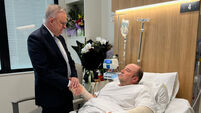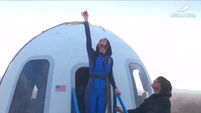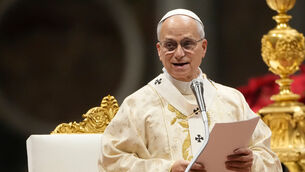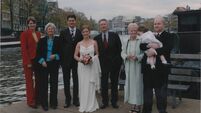Surgeons clear major hurdle in twins op
An international team of five neurosurgeons successfully attached a new vein and began separating 29-year-old Ladan and Laleh Bijani's brains in the unprecedented operation expected to last two to four days, said an official at the Raffles Hospital in Singapore.
Tackling the shared vein was considered the biggest obstacle in the surgery. Other than sharing the vein, the women's brains are not joined although they touch inside their skulls. Their bodies are otherwise distinct.
German doctors told the twins in 1996 that the shared vein, which drains blood from their brains, made surgery too dangerous.
"There may still be some difficulties encountered, but up until now we are quite satisfied with the progress of the whole surgery," hospital spokesman Dr Prem Kumar said yesterday.
"They are stable, the anaesthesia is working quite well, so we are cautiously optimistic," he said.
The operation could kill one or both of the sisters, but after a lifetime of compromising on everything from when to wake up to what career to pursue, the Bijani sisters said they would rather face those dangers than continue living joined.
Before dawn, surgeons began stitching a vein taken from Ladan's thigh to one of the twin's brains to compensate for the removal of the shared vein, Dr Kumar said. He would not say who received the original shared vein.
Classical music played softly as surgeons worked in tight spaces in front of and behind the twins, who are sitting in a custom-built brace connected to an array of lines feeding them intravenously and monitoring their vital signs, Dr Kumar said.
"Nothing is going on at a hurried pace," he said. "Everything is quite calm and measured. There's lots of discussion."
Surgeons had earlier encountered unexpected delays cutting through their skulls when the bone turned out to be denser than previously thought, Dr Kumar said.
"The procedure took six hours longer than originally expected because the bones were thick and compact, especially in the areas where the two skull bones fuse," Kumar said.
The twins spent months training at a gym to build up strength for the surgery and Dr Kumar said they could be kept asleep for four days if necessary.
The twins said they wanted to walk into the operating room as a sign of courage, but they were brought in by wheelchair because they were too tired to stand, Dr Kumar said.
Participating neurosurgeon Dr Benjamin Carson, the director of paediatric neurosurgery at Johns Hopkins Children's Centre in Baltimore has successfully separated three sets of craniopagus twins siblings born joined at the head.
However, this is the first time surgeons have tried to separate adult craniopagus twins. The surgery has only been performed successfully since 1952 on infants, whose brains can more easily adapt and recover.
"If God wants us to live the rest of our lives as two separate, independent individuals, we will," Ladan Bijani said before the operation.
In a statement on Iranian television on Sunday, Iranian President Mohammad Khatami hoped for success. "The prayers of the Iranian nation are with you," Mr Khatami said in a message addressed to the medical team.














